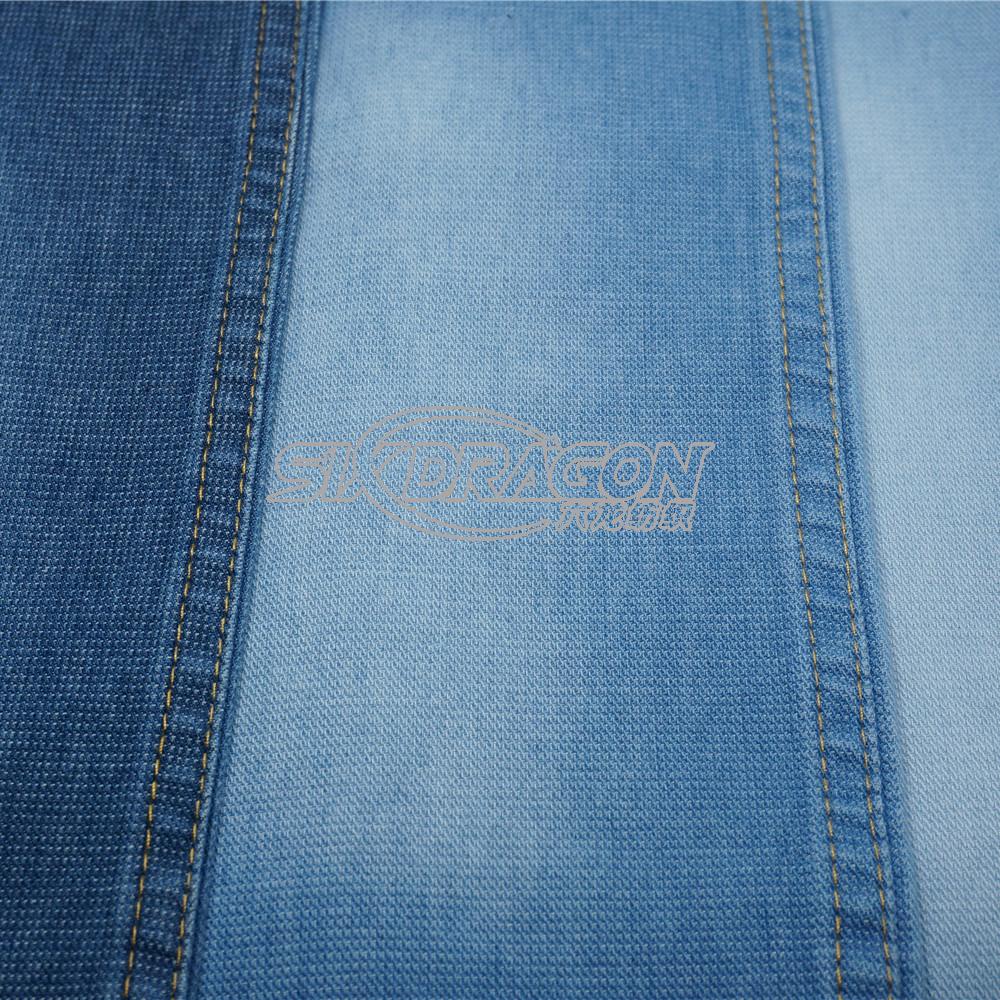
Desizing: At present, most denim fabrics are softened by rinsing with fiber enzymes. In the production of denim, no matter the thickness, a corn starch slurry is applied to the warp during the weaving process to improve the stiffness of the yarn. In the desizing process, cellulase can decompose the pulp on the denim and make the pulp peel off. Although desizing will slightly fade the denim, it improves the softness and drape of the denim. The light and thin denim fabric after desizing can be made into tablecloth or napkin cloth with soft hand feeling and excellent drape feeling.
Stone washing is a physical method to fade denim and increase the color contrast effect. Put a roll of cloth 20 yards long and 62 inches wide into a 250-pound washing tank with pumice stone, and wash it with stone (the best washing effect is when it accounts for 35% of the tank's capacity). In the washing tank, the denim and the stone are mixed and rolled and rubbed against each other. The length of the rolling time determines the color depth of the denim after washing. The longer the washing time, the lighter the color and the stronger the color contrast effect. After the denim is washed, it is finished by rinsing, softening and drying. The soft and rich color layers of the denim after stone-washing have become the first choice for fashion in the home textile and clothing industries.
Like enzymes, enzymes can be used to degrade cellulose in cotton fibers. Because the color of denim is actually attached to the outer layer of the yarn, the fiber and the indigo dye attached to it can be washed away together with the enzyme washing water. When the desired color is obtained, the enzyme wash can be stopped by changing the alkalinity of the water or increasing the water temperature. Then proceed to the next step of rinsing and softening. Enzyme washing is gentler than stone washing, because no sharp stones are used in the enzyme washing process. Enzyme-washed denim has a uniform color and a soft hand, suitable for home textiles and clothing.
In the finishing process, pumice stone and enzyme are used together to give denim a nostalgic effect. In the first step, only pumice stone and fabric are placed in the washing tank, and then in the next step, the enzyme is put into it, and the pumice stone and fabric are rolled together until a natural nostalgic effect is produced. The most common method of washing is blue denim.
Sand washing: This finishing uses a row of horizontal rollers, which can be covered with sandpaper or chemically treated abrasives. The denim cloth is put on the roller, and the protruding part is frosted. This finishing method will partly fade the denim, and produce a velvety feel on the surface of the denim, giving it a soft and delicate touch. The sand washing method can also produce fashionable appearance effects such as wrinkles and whiskers on the denim.
Styling finishing: For denim fabrics, it is feasible and necessary to adopt several finishing methods at the same time. Because denim dye is attached to the surface of the yarn, it is a problem that manufacturers must solve to prevent other fabrics from being dyed by denim. Resin, fixing agent, etc. can avoid friction and fading, especially suitable for dark denim. In addition, water repellent treatment also helps prevent color fading during home furnishing and external wear.
Mr Jack(GM)
We woven fabrics manufacturer from china over 16 years,we weave/dye/print ourselves.
Any woven fabrics inquiries please contact us ,we supply one-stop full series woven fabrics service.
Mob/whatsapp/wechat:+8615988150362
Mail: director@sixdragontextile.com
Hangzhou Six Dragon Textile Co.,ltd
http://www.sixdragontextile.com
Contact: Jack Wang
Phone: +86-15988150362
E-mail: gm@sixdragontextile.com
Add: 杭州六龙纺织品有限公司 Yuhang,Hangzhou,Zhejiang,China